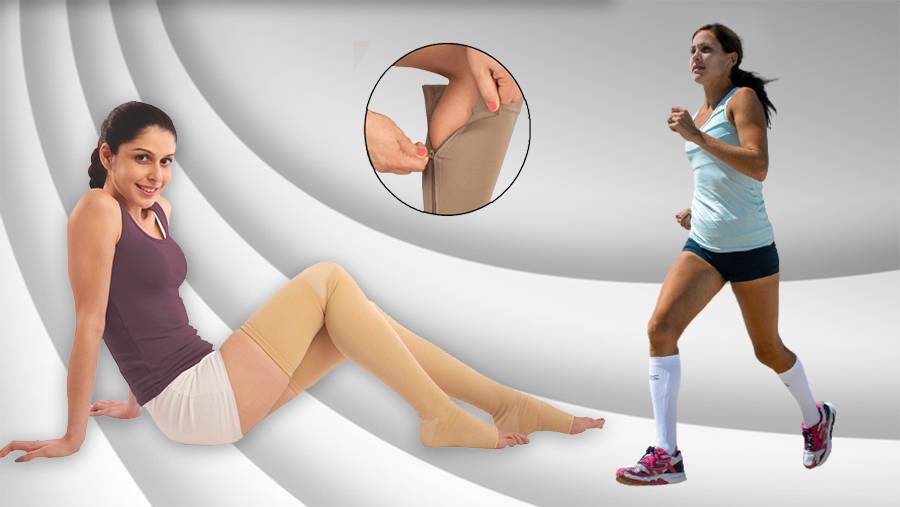
Hello
Select Address

Compression stockings adhere to several purposes; it could be for mere comfort or for support in the healing process. It is also preferred by sportspeople to relieve tired muscles and prevent some serious medical conditions too.
The basic idea behind compression stockings is rather simple. The veins in our body are responsible for carrying waste blood from different parts of the body back to the heart. Certain medical conditions like diabetes or dysautonomia (a failure of the autonomic nervous system) often disrupts the working of the venous valves! This disables the waste blood to flow upwards which is against gravity. Consequently, blood pooling leads to swelling and pain in the legs. Compression stockings put considerable pressure which prohibits the venous blood from flowing backward. Therefore, patients suffering from DVT (deep vein thrombosis) and varicose veins are mostly recommended a pair of compression stockings. When the blood pooling is too low, that is around or below your calf region, knee-high compression stockings are highly recommended.
The common users of thigh length compression stockings
• Patients who feel light-headed and dizzy as soon as they stand up
• Athletes and other sportspersons
• If the job of a person requires him to remain in an upright position for long hours in a day.
• Expecting women as pregnancy puts a lot of extra pressure in the legs
• Travelers on long flights and personals like pilots and the cabin crew.
Some important FAQs involving compression stockings
When should I wear thigh-length compression stockings?
Morning is the best time of the day to put on your compression stockings on. No matter how busy you are, if you walk around and try completing some of your early morning tasks before wearing them, they might not be equally effective! This is because the blood has already traveled down and started pooling in. Even wearing those skin-tight pair of socks could be a little difficult due to this!
Pulling off those pair of stockings before you slip into the bed is equally important. If you are too tired to do so, you are sure to wake up with cold, numb and tingling legs!
How long can I wear them?
Compression stockings ideally, are to be worn throughout the day. Make sure you pull them off at night and the very first thing to be done next morning once you are out of bed, is wearing them again. The late you are, the lesser effective these garments become. Using them at a stretch for the whole day does not have any significant side effects whatsoever, apart from itching, slight joint pain in the knees, etc.
Do compression stockings affect blood pressure?
A sudden upright position causes a foot-ward fluid shift and could consequently decrease the arterial pressure too. To prevent this, the compression stockings are recommended; however, the effect of various lengths – knee-high, thigh-high and waist-high are different.
Which time of the year is most suitable for using compression stockings regularly?
This is another common query. Well, winter is the most suitable season for your compression stockings. During summer, you need to be extra careful as sweat causes itching and yeast infections and they are most common in females. Thus, women need to be more aware!
Maintaining your compression stockings
Compression stockings are delicate garments that need to be taken well care of. Proper maintenance ensures that your pair of medicated stockings remain okay as far as its effectiveness is concerned. Therefore, a quick glance at some of the care measures that could be taken reveals the following:
• Washing them properly with cold water and gentle soap is the best way to keep them clean. They should be hanged only after you’ve patted them dry, however, never wring it. If the water is not removed, hanging could de-shape them!
• You need to replace them every 3 to 6 months. This is because elastic fibers eventually break down after prolonged regular use. So, once they start sagging, you need to get a new pair. One good indication is that your socks have become easy to wear!
• Do not use oils or moisturizers preferably. This is because oily substances break down the elastic fibers. Hence, it is better to nourish the skin at night when you have removed the pair of stockings.
Unless advised, waist-high compression stockings are not necessarily required by individuals. In fact, the commonly used variant is the thigh-high compression stockings which are quite effective for aching calves and lower leg pain.